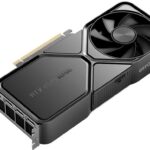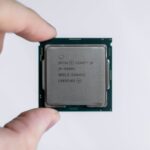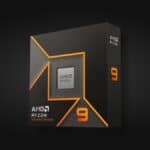Intel’s upcoming Battlemage GPU lineup has sparked curiosity among tech enthusiasts. Recent reports suggest a shift in the expected product range. Intel will likely release the B580 and B770 graphics cards, but not the previously rumored B970 model.
The B580 has already made waves, with shipping manifests hinting at its imminent arrival. This mid-range option could offer a balance of performance and affordability. The B770, presumably a higher-tier model, aims to compete with more powerful offerings from NVIDIA and AMD.
Intel’s decision to focus on these two models may reflect a strategic approach to market segments. By concentrating on mid-range and high-performance options, Intel seeks to establish a strong foothold in the competitive GPU landscape.
Intel’s Battlemage GPU Lineup: No High-End B970 Expected
While Intel is gearing up to launch its next-generation Battlemage GPUs, rumors suggest that a high-end B970 model might not be part of the initial lineup. This strategic decision could indicate Intel’s focus on the mid-range market and a cautious approach to competing with NVIDIA and AMD’s top-tier offerings.
The Battlemage Lineup
Intel’s Battlemage GPUs, successors to the Alchemist series, are expected to bring significant performance improvements and architectural enhancements. The lineup is rumored to include:
- B770: Positioned as a high-end offering, but potentially not reaching the performance levels of NVIDIA’s RTX 4090 or AMD’s RX 7900 XTX.
- B580: A mid-range card targeting the sweet spot of price and performance.
- B360: An entry-level option for budget-conscious gamers.
Why No B970?
Several factors could be contributing to Intel’s decision to skip a high-end B970:
- Focus on Mid-Range: Intel might be prioritizing the mid-range market where they can offer competitive performance at attractive prices, gaining market share and building brand recognition.
- Competition: The high-end GPU market is dominated by NVIDIA and AMD, making it challenging for Intel to compete directly with their established top-tier offerings.
- Resource Allocation: Developing a high-end GPU requires significant resources and time. Intel might be strategically allocating its resources to other areas, such as integrated graphics or AI accelerators.
- Yield and Production: High-end GPUs often have lower production yields due to their complexity. Intel might be avoiding potential production challenges by focusing on more mainstream models.
Potential Future for a High-End Model
While a B970 might not be in the initial Battlemage launch, Intel could potentially release a high-end model later. This could depend on several factors:
- Market Demand: If there’s sufficient demand for a high-end Intel GPU, the company might reconsider its strategy.
- Technological Advancements: Future architectural improvements or process node advancements could enable Intel to create a more competitive high-end offering.
- Competitive Landscape: Changes in the competitive landscape, such as new entrants or shifts in market share, could create an opportunity for Intel to enter the high-end segment.
What This Means for Gamers
For gamers seeking the absolute best performance, NVIDIA and AMD will likely remain the primary choices in the near future. However, Intel’s focus on the mid-range could bring more competitive options and potentially drive down prices in that segment.
As always, stay tuned for official announcements from Intel and keep an eye on the latest tech news and reviews to make informed decisions about your next GPU purchase.
Key Takeaways
- Intel plans to release B580 and B770 GPUs in the Battlemage lineup
- The B970 model is not expected to be part of the initial product range
- Battlemage GPUs aim to challenge NVIDIA and AMD in the graphics card market
Overview of Intel Battlemage GPU Lineup
Intel’s upcoming Battlemage GPU series focuses on the B580 and B770 models. These graphics cards aim to compete with offerings from Nvidia and AMD in the discrete GPU market.
Intel’s Strategy in the GPU Market
Intel plans to release two main Battlemage GPUs: the B580 and B770. The company has reportedly delayed the high-end B770 model. This delay stems from the GPU not yet reaching the tape-out stage, indicating a launch at least a year away.
The B580 appears to be further along in development. Recent shipping manifests suggest the B580 could arrive sooner than expected. Intel might unveil these new graphics cards at CES 2025.
Intel’s strategy involves a staggered release approach. This allows them to refine their designs and manufacturing processes while building market presence.
Comparison to Nvidia and AMD Offerings
Intel’s Battlemage GPUs aim to challenge Nvidia and AMD in the mid to high-end GPU market. The B770 is rumored to compete with Nvidia’s RTX 4070 Super in performance.
Key features of Battlemage GPUs:
- Improved performance over current Arc GPUs
- Competitive pricing strategy
- 16GB VRAM for the high-end model
Intel’s entry challenges the Nvidia-AMD duopoly. This competition could lead to more innovation and better pricing for consumers in the graphics card market.
The success of Battlemage will depend on:
- Performance benchmarks
- Driver stability
- Pricing strategy
- Availability at launch
Technical Specifications and Performance
Intel’s Battlemage GPU architecture promises significant improvements over its predecessor. The upcoming Arc B580 and B770 models are expected to deliver enhanced performance for gamers and content creators.
Intel’s Xe and Battlemage Architectures
The Battlemage architecture builds upon the foundation laid by Intel’s Xe graphics technology. It introduces Xe2 cores, which are more advanced than the Xe cores found in Alchemist GPUs. These Xe2 cores are designed to boost computational power and efficiency.
Recent leaks suggest that Battlemage GPUs may feature up to 24 Xe2 cores. This represents a substantial increase in processing units compared to previous generations.
The new architecture is expected to improve the Vector Engine, potentially enhancing gaming performance. Battlemage GPUs may also include larger L2 cache sizes, which could reduce memory latency and improve overall system responsiveness.
Expectations from Arc B580 and B770 Models
The Arc B580 and B770 are anticipated to be the flagship models of Intel’s Battlemage lineup. These GPUs are likely to target mid-range to high-end performance segments.
Speculations suggest the B770 could feature the full BMG-G10 chip, while the B580 may use a cut-down version. Both models are expected to offer increased VRAM capacities, possibly up to 16GB, to handle modern gaming and content creation demands.
Benchmark leaks hint at competitive performance levels for these new GPUs. They may feature wider memory buses, potentially 192-bit or 256-bit, to support higher bandwidth requirements.
The B770 is rumored to compete with NVIDIA and AMD’s upper mid-range offerings. The B580 could target the popular mid-range market segment, offering improved price-to-performance ratios.







